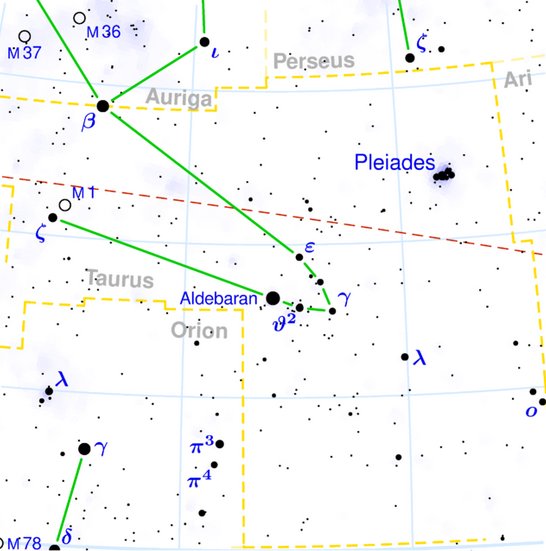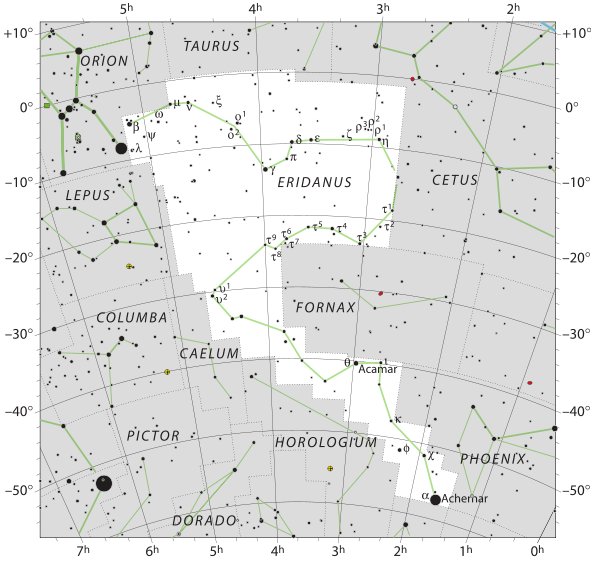Moving on to the G text, intending to put Al Shaula where it should be, I suddenly discover another mistake of mine. Hyadum I is γ and Hyadum II is δ (between γ and ε) - not the other way around as I had described it at the beginning of the text:
At Hyadum I (γ) there is as yet no opening, no Sun light separating Sky and Earth, no vaha mea. In rongorongo times the heliacal rising of γ Tauri should have represented time zero (like a knot, a fist, or a flower bud) and the text on the front side of the G tablet should not have any glyph prior to δ (which however in itself suggests a darkness of a fertile kind).
Time is running like a fluid and not until the first day has been completed in full should the glyph sign be reached. Hyadum II (δ) should therefore be represented by Ga1-1. The last glyph on side b has according to the normal vocabulary of Metoro a meaning of 'covered up' (puo), which well could describe the state of a closed fist (nothing as yet counted) - although probably not a single fist but a pair of such invisible mata, those fished up and displayed in Ga1-2 as things of the past. Tagata probably means 'completed':
The pair of mata, first covered up and not visible and later in the past and visible, could alternatively have represented the 'Sky Father' and the 'Earth Mother' in close embrace respectively no longer so: ... Sky (rangi) and Earth (papa) lay in primal embrace, and in the cramped, dark space between them procreated and gave birth to the gods such as Tane, Rongo and Tu. Just as children fought sleep in the stifling darkness of a hare paenga, the gods grew restless between their parents and longed for light and air. The herculean achievement of forcing Sky to separate from Earth was variously performed by Tane in New Zealand and the Society Islands, by Tonofiti in the Marquesas and by Ru (Tu) in Cook Islands. After the sky was raised high above the earth, props or poles were erected between them and light entered, dispelling the darkness and bringing renewed life ... The position with no glyph could correspond to γ and the puo glyph correspond to heliacal Beid, the little egg - omikron - of ο¹ Eridani in May 22:
This line of reasoning could possibly mean there should be 16 days from the true heliacal day to the first night of visibility for Hyadum II in May 24. I.e. 144 (May 24) - 16 = 128 (May 8), where 5-8 suggests 58 = 2 * 29. 472 (total number of glyph positions on the G tablet) + 16 = 488 = 8 * 61. Puo in Gb8-30 would then correspond not to Beid (62.2) but to stars rising with the Sun in the early morning of day *62 - 16 = *46 (May 6), for instance Misam (κ Persei) or Botein (δ Arietis):
Zibal is ζ Eridani and I have as usual counted Gb8-30 twice in order to reach 8 * 59 = 472 for the whole text. This rule should remain also after having added 16. The pair of zayin (Arietis and Eridani) stars could represent the 'ignition':
| ||||||||||||||||||||||||||||||||||||||||||||||||||||||||||||||||||||||||





